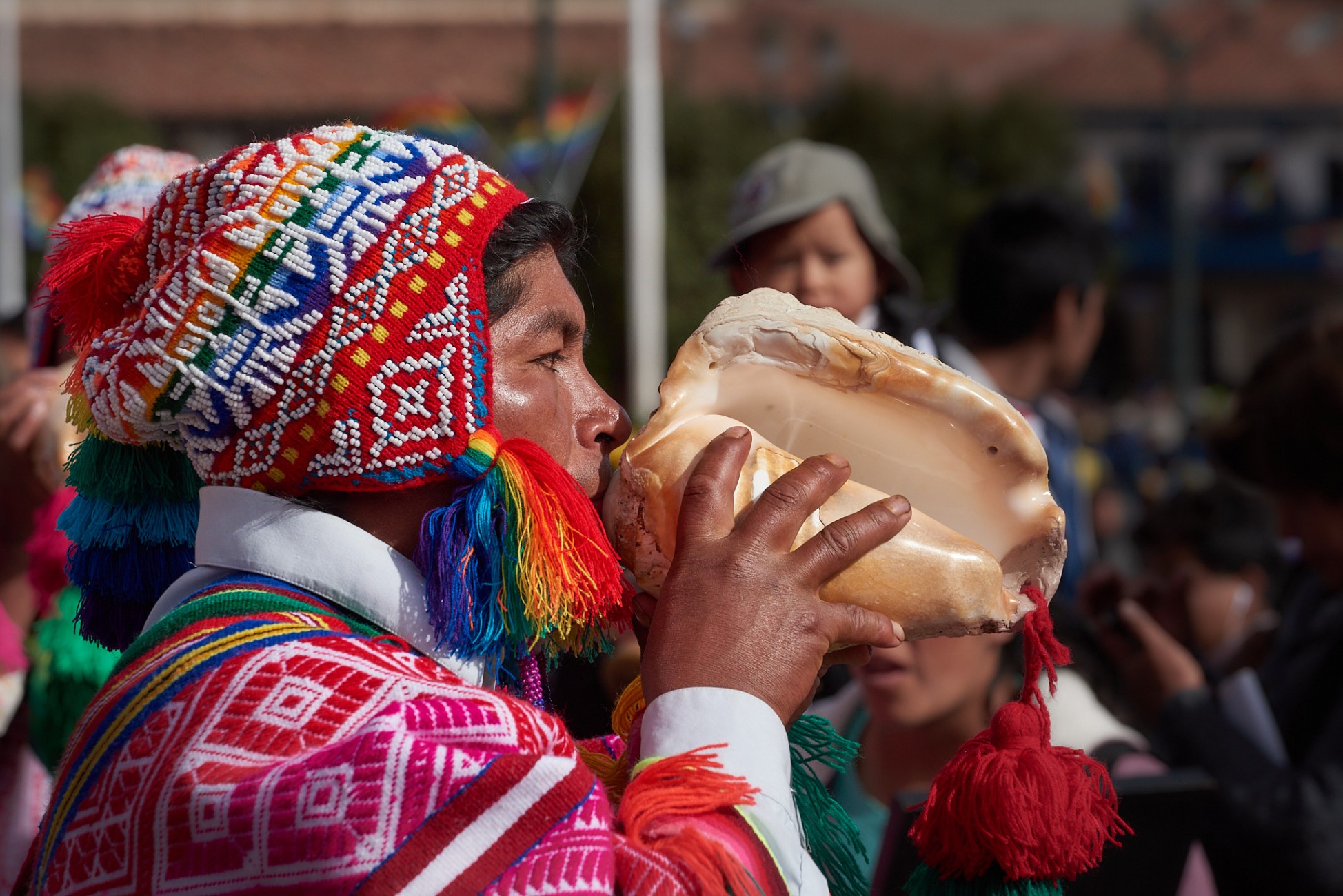Recorriendo Cusco en Corpus Christie
Como un pequeño y aislado rincón del mundo se nos aparece Cusco cuando asoma inmerso entre las montañas de la cordillera. La estrecha ventanilla del avión nos permite obtener una primera mirada de su ubicación, su entorno, su tamaño...parece pequeña al inicio...pero se va paulatinamente agrandando ante nuestros ojos y nuestra mente, a medida que nos aproximamos a su geografía, su arquitectura, su gente y su historia.
Capital del otrora magnífico y floreciente imperio incaico, Cusco es lugar de encuentro con el sincretismo entre tradiciones ancestrales autóctonas y el cristianismo europeo, cruento destino final del célebre Tupac Amaru, punto de partida para el acceso a las ruina de Machu Picchu, obra maestra de la arquitectura y la ingeniería indígena.
Calles estrechas y empinadas, escoltadas por antiguas casonas españolas cimentadas sobre las aún más antiguas construcciones incaicas. Calles donde el color resalta en los exteriores de sus casas, la vestimenta de su gente, los adornos de sus animales. Calles y rostros. Rostros curtidos por el clima, calles y pieles surcadas por el paso del tiempo. Texturas en las calles, texturas en los rostros...sombras, luces, colores.
Difícil por momentos decidir entre monocromía y colores. Las imágenes que se nos aparecen en cada esquina, en cada calle, en cada rostro, nos hacen dudar qué es lo más adecuado de capturar a través de la lente al surgir la ocasión: si la policromía que impacta en nuestros ojos, o las texturas y claroscuros que se van imprimiendo en nuestra mente.
Todo ello enmarcando la festividad de Corpus Christi en Cusco, perfecto ejemplo de fusión entre devoción cristiana y tradiciones incaicas, expresión de una singular riqueza artística en las vestimentas y adornos de las imágenes religiosas, desplazadas al paso en pesadas plataformas, soportadas sobre estoicos hombros, a veces proyectados sobre pies descalzos, por las calles de la ciudad, al son de músicas de bandas. Rostros que por momentos dejan trasuntar el sublime esfuerzo de la larga tarea.
Tiempo asimismo de danzas, de máscaras y de desfile de coloridos trajes tradicionales.
Todo ello ocurriendo alrededor de la Plaza de Armas, donde la efigie dorada del Inca resplandeciendo bajo los rayos del dios Sol nos recuerda que alguna vez, él dominó estas tierras.
.
Walking Cusco in Corpus Christie
As a small and isolated corner of the world reveals Cusco to us when it appears immersed among the mountains of the Cordillera de Los Andes. The narrow window of the plane allows us to get a first look at its location, its surroundings, its size...it seems small...at first...but then gradually enlarges before our eyes and our minds, as we approach its geography, its architecture, its people and its history.
Capital of the once magnificent and flourishing Inca empire, Cusco is a meeting place with the syncretism between indigenous ancestral traditions and European Christianity, bloody final destination of the famous Tupac Amaru, starting point for access to the ruins of Machu Picchu, masterpiece of indigenous architecture and engineering.
Narrow and steep streets, escorted by old Spanish mansions founded on even older Inca constructions. Streets where color stands out in the exteriors of their houses, the clothing of their people, the decorations of their animals. Streets and faces. Faces weather-beaten, streets and skin furrowed by the passage of time. Textures on the streets, textures on faces...shadows, lights, colors.
Difficult at times to decide between monochrome and colors. The images that appear to us on every corner, on every street, on every face, make us doubt what is the most appropriate thing to capture through the lens when the occasion arises: whether the polychrome that impacts our eyes, or the textures and chiaroscuros that are imprinted on our minds.
All of this framing the Corpus Christi festivity in Cusco, a perfect example of fusion between Christian devotion and Inca traditions, expression of a singular artistic richness in the clothing and decorations of religious images, moved in step on heavy platforms, supported on stoic shoulders, sometimes projected on bare feet, through the streets of the city, accompanied by the sound of band music. Faces that at times reveal the sublime effort of the long task.
Corpus festivity is also a time for dances, masks and a parade of colorful traditional costumes.
And all this happening around the Plaza de Armas, where the golden effigy of the Inca shining under the rays of the Sun god reminds us that he was the one who once dominated these lands.
